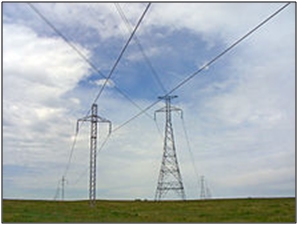Introduction
High voltage, direct current (HVDC) is the new means of current transmission. Previously the use of alternating current for the same purpose has been employed. But with the increased improvement in technology the methods are changing. The new emerging technology always serves as a cheaper source.
HVDC also provides the same benefit. When long distances are covered for the transmission of electric current a significant amount of electrical loss is observed.
This loss can be greatly reduced by the use of HVDC technology. Underwater power cables are a huge application of this technology. Usually there is a need to charge and discharge the cable capacitor when the means of transmission is alternating current. But with HVDC this restraint too has been eliminated.
Advantages
HVDC technology has proved more advantageous over AC transmission because:
- For large transmissions over long distances it is cheaper.
- The power loss during long distance transmission is less.
- Installation of the HVDC setup is expensive but the cost is covered up due to decreased power transmission cost.
- It requires thinner and less number of conductors as does not have to support three phases nor has any skin effect, respectively.
- The transmission loss in HVDC system is 3.5% per 1000 km which is much less than that encountered when using AC transmission system.
- It can also provide power between different AC network systems, separate from each other. The power being transmitted can also be controlled when the voltage is not stable and also the risk of power failure in one system transferring to another is reduced.
- It can also be used to create connection between energy sources which are located distant from the main power transmission center.
- Economically and technically the HVDC system is also more beneficial than the AC system.
- Undersea cable transmission is a wide HVDC tech application being utilized daily. The lines have a higher capacitance because the lines are insulated with a thin layer and metal sheath is covering them. In case of AC current energy loss is more because the conductors are required to be charged and discharged. In case of DC current the cable is only charged once when the voltage is changed.
- Where additional wires cannot be installed HVDC technology helps to increase the capacity of the grid.
- Without the need to increase the potential short circuit current, HVDC can be used to stabilize the AC power grid.
- Even in case of overhead line systems, the current being delivered at the end is greater than in case of AC current and also the non-even distribution over the cross-section area of conductor of the current is not a problem anymore.
- HVDC system also helps to transmit energy between systems having unsynchronized AC distribution. Not only the stability of the system is increased but also the system is prevented from power failures. The amount of power and direction of DC link can be changed as and when needed and so the current being delivered at both the ends supports the AC network.
Applications
Two applications of HVDC are very widely known which include the AC network interconnections and renewable electricity superhighways.
- The transmission of AC current is a major concern when the power is required to be transmitted between systems when the output current from one end is less or greater than that required at the other end for input. This problem can be solved with the help of HVDC systems in which the amount of voltage being transmitted is also controlled along with the transmission. The conversion of AC current into DC is defined to be rectification while that of DC to AC is defined as inversion.
- People have long studied the effects and have finally found that HVDC based super grids distributed over widespread areas are also helpful in decreasing the intermittency effects of the large number of dispersed wind and solar farms by balancing and flattening the output of these grids. Such a grid can help bring 100% renewable energy. This technology is being greatly applied nowadays for development of HVDC links between various countries.
HVDC plus-The Technology For Future
This is a new technology that has been introduced and is based on HVDC tech. This advancement in HVDC tech provides greater benefits than the simple HVDC tech both technically and in terms of cost. The issue of small space has also been resolved due to the use of modular multi-level voltage-sourced convertors. This serves as a string connection between off-shore and on-shore grids for efficient power transmission. The grid efficiency is also increased due to the use of this technology.
What do you know about HVDC technology?

